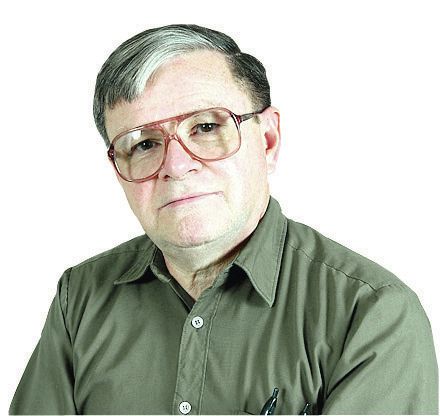Click here to subscribe today or Login.
You can’t go home again?
Actually, sometimes you can. At least if the old house is still there and you’re not interrupting anyone’s dinner.
If it’s not … well, more about that in a bit.
A few years ago, I managed to get inside the house where we’d lived in Wilkes-Barre’s Rolling Mill Hill section from 1947 to 1955.
It was empty at the time, and succeeding owners had made some changes — some better, some worse. Of course, it seemed smaller than in the past. But my memories of the layout and the peculiarities, such as a staircase that curved at the top, proved accurate.
Other times, though, memory alone has to provide your nostalgia fix because the place has gone to homestead heaven. Several of mine have. Here’s one.
In the late 1950s, “home” was a five-room apartment over our store on Wilkes-Barre’s old East Market Street. I say “old” because the upper half of what used to be East Market Street, our section, no longer exists.
Here’s the story. In 1955, my parents bought a large building that, records show, dated from the years shortly after the Civil War, when the city was surging in population. East Market remained a busy place generations later.
Today, though, the old neighborhood exists only in photos. Our building’s former site is now a grassy field next to an elementary school built in the 1970s. That huge section of East Market — asphalt and concrete and all — is now given over to single-family homes, shopping centers and a high-rise, as well as the school.
What happened was urban redevelopment. Thanks to powerful Congressman Daniel J. Flood, Wilkes-Barre got in on the ground floor of a new federal program designed to sweep away crowded older areas of America’s cities and rebuild them in new and modern style.
Upper East Market — where once you could find a job, rent a room, buy a bagel, play a pinball machine, pick up a New York tabloid, choose some fish for dinner, be fitted for a suit, and do a hundred other tasks — was by 1970 no more. Even the narrow little streets paralleling it on its sides were gone.
We lived there for 12 years until moving to the West Side. I still run into folks who shared the East Market Street experience, and we’re sort of an alumni group.
I’d also like to meet my family’s predecessors in that old building. Then history would be complete.
Yes, I know who worked in our store and maybe lived in our apartment before we took the place over — and they’re heavyweight names. For starters, my parents bought the building in 1955 from a couple named Ben and Rose Lenowitz.
If those names don’t ring a bell, maybe the names of their kids will. The Lenowitzes’ son Lou, a fighter pilot, was proclaimed the “hero of Tel Aviv” for his exploits in helping Israel win its independence in the late 1940s. In the same decade, their daughter Lillian moved to New York City and founded Coach handbags.
That’s some one-two punch of domestic predecessors.
But did I walk in their footsteps? Maybe, maybe not! It’s clear that the Lenowitz family owned the store and worked there, as did I. Old city directories are less clear on whether they actually lived in the apartment overhead, where I did.
Can’t go home? Hey, a pair of near-mythic figures had something to do with our old place. That and our old photos are fine with me.





